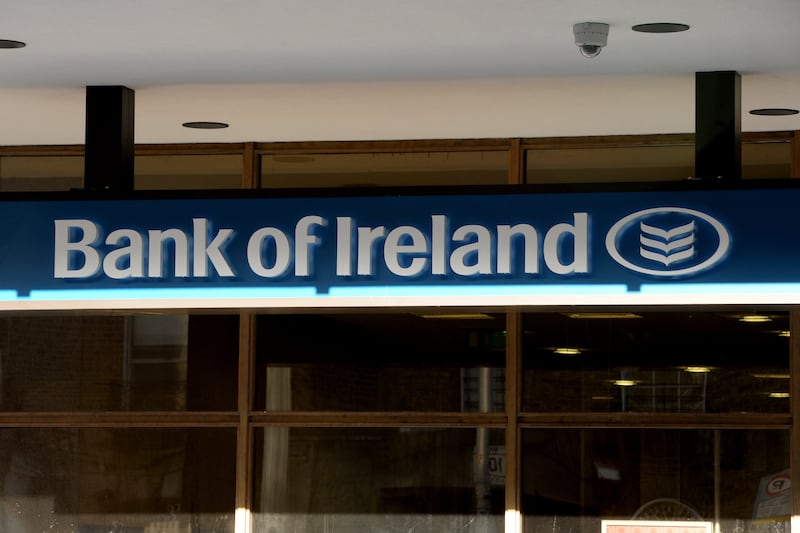Ardagh Metal Packaging (AMP) chief executive Oliver Graham probably feared he got more than he’d bargained for, after signing up to a fireside chat at a Deutsche Bank conference in New York last month.
He’d barely opened his mouth when a fire alarm went off in the bank’s tower complex near the southwest corner of Central Park. The moderator, Deutsche analyst Kyle White, piped in to say it was due to the air quality in Manhattan, caused by Canadian wildfires at the time. “There is no fire, so you’re still good to go,” he said. “Continue.”
Many investors from the time of AMP’s stock market flotation two years ago, however, have long slid down an escape chute.
Shares in the company, part of the Ardagh Group glass and metal containers empire which Irish financier Paul Coulson has built up over the past 25 years, have slumped by two-thirds since they started trading in early August 2021.
The business went public through a reverse merger of the beverage cans maker in early August 2021 into one of the listed blank cheque companies – or special purpose acquisition companies (Spacs) – that were all the rage on Wall Street at the time.
The pitch at the time of the deal was simple: AMP, which makes drink cans for customers ranging from Coca-Cola to Heineken, would double its earnings before interest, tax, depreciation and amortisation (ebitda) over the space of four years to $1.1 billion (€990 million) in 2024.
The earnings were to be turbocharged by a $1.8 billion investment programme as AMP tapped into rising demand for canned energy drinks, flavoured beverages and craft beer – and as it and the wider Ardagh Group’s glass business benefited from an ongoing shift away from plastic packaging.
AMP’s earnings declined 6 per cent last year amid softer demand for beverage cans on both sides of the Atlantic and as there was lag, particularly in Europe, in its ability to pass on soaring energy and other costs to customers.
That weakness has continued into this year, prompting the company to pull back on can making, as households remain cautious on spending. While AMP is not as exposed as some of its peers to the challenging mass beer market, the hard seltzers (sparkling flavoured water with alcohol) market has not yet developed as the company had hoped.
Brazil has stood out as a particularly weak spot. After a major brewery customer, Grupo Petrópolis, filed for bankruptcy protection from its creditors in March, the company has focused, since then, on running down its beverage cans stockpile.
The consensus view among analysts is that AMP’s ebitda next year will come in at a little more than $750 million – about 32 per cent below its original target.
Some of that is down to the company not building out factories at the pace originally intended under its investment programme, including one in the works in Brazil.
AMP’s plans to build a drink cans plant near Belfast at a cost of about €180 million – bringing manufacturing back to Ireland for the first time since the Ardagh Group’s controversial closure of the Irish Glass Bottle facility in Ringsend in Dublin two decades ago – also appears to be drifting. While planning permission for the facility was granted last August, it has recently been reported that construction may not begin until next year.
With the company set to report interim results next week, investors will be keen to see if it sticks to its forecast for ebitda to grow by 10 per cent for the year as a whole. It all hangs on the second half of the year, as Mr Coulson, the company’s chairman, and Mr Graham have guided that ebitda will decline for the first half.
To be sure, analysts on the whole remain bullish about AMP’s medium-term prospects – especially if it cracks the still water market by coming up with a way for consumers to open and close drink cans. “We’re working hard on reclosable solutions,” the chief executive said last month.
But the biggest head-scratcher for some observers in the meantime is the highly indebted AMP’s insistence that its 10 US cents-a-share quarterly dividend remains safe, when the level at which the shares are trading – at under $3.70 – suggests anything but. It equates to a dividend yield of close to 11 per cent, a multiple of the 1.5 per cent average yield of companies listed on the S&P 500 index.
Mr Graham has repeatedly insisted that the dividend is sustainable, particularly as its massive investment programme winds down and cash flow ramps up in the coming years.
But there’s a bigger reason protecting the dividend, despite a net debt pile of about $3.55 billion at a time of rising interest rates and Moody’s, the ratings agency, has warned that the company is unlikely to meet its own target of reducing its net borrowings to 3.75-4 times earnings next year.
AMP, which remains 76 per cent owned by Ardagh Group, is a leveraged business inside an even more leveraged business. And a steady payout is needed to meet interest payments upstairs.
The ultimate parent of the group, ARD Finance, has a total debt pile of $11.7 billion, including $1.76 billion at holding company level, above Ardagh Group.
















